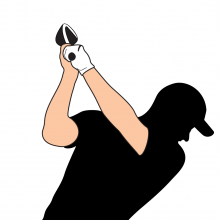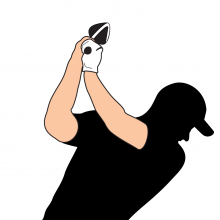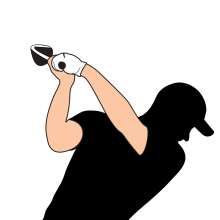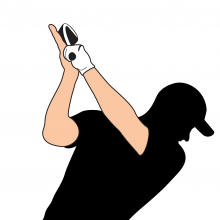The Golf Swing at The Top
The Golf Swing Transition
At the top of a backswing, the golf swing transition takes place, the direction of the swing motion reverses course. Motion away from the target (backswing) becomes motion toward the target (downswing). This transition is a critical juncture in the golf swing and needs your maximum attention.
Three Hand Positions at the Top of Golf Swing

Squared position:
The club-head is squared, the hands perfectly rotated to the ideal position. This is the simplest way to return the motion toward impact.

Cupped position:
The club-head is open and the hands are rotated under. This position is likely to cause slice.

Bowed position:
The club-head is closed and the hands are rotated over. This position will most likely cause hook.
Common Problems at the Transition
- Starting a downswing before completing a backswing.
- Springboarding off from the end of the backswing; this may work for some, but for most it does more harm than good, as they lose speed, balance, and composure.
- Putting weight on the wrong foot (front foot or subdominant side).
- Moving the upper body upward, downward, or sideways (swaying).
- Re-gripping; this bad habit triggers the dominant hand to be active.
- Casting; releasing a wrist at the start of downswing, lose swing speed.
- Swinging over the top: hitting at the ball, initiates out to in swing path.

Opened Hand - SwingPilot Method
SwingPilot Advantages:
- Causes weight to shift to the correct foot (back foot or dominant side)
- Promotes better shoulder turn
- Maintains a controlled position at the top
- Makes it easy to detect the completion of the backswing
- Stops the habit of re-gripping at the top
- Prevents casting or hitting over the top
- Helps initiate a smooth and correct downswing.
- Provides controlled golf swing transition.
Key point: Finish the backswing correctly and then start the downswing precisely.
( See Swing Plane )

